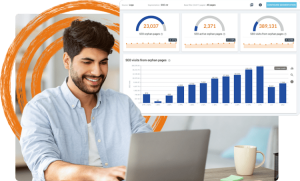Google Analytics 4 (GA4) is the latest version of the platform set to replace all previous iterations within the next two years. It’s the next generation of analytics services from Google, but is it really something you should be concerned about?
The short answer? YES!
Designed with the future in mind, GA4 packs a ton of new features and improvements that can help you better understand your audience.
In a nutshell: Knowing more about your audience = Gaining more opportunities to serve them better!
GA4 provides more sophisticated, contextualised information about your audience at different touchpoints, allowing you to see and better understand how users move through the purchase funnel and along their different journeys. With deeper insights into your audience’s behaviour, you can tweak your marketing and sales strategies to better fit their needs.
But that’s not all. Learn more about why GA4 implementation should be on your radar as we go through some of the key details you need to know.
Google Analytics 4 vs Universal Analytics: What’s Different?
GA4 is separate from Universal Analytics (UA). UA is the old version that’s being replaced, and while it may be a platform you’re already well-accustomed to, it’s not going to be available for much longer.
In terms of how the two versions are different, GA4 sets itself apart in many ways. Some of the biggest changes you should care about include the following
1. UPDATED REPORTING INTERFACE
Most, if not all, of the reports you’ve become familiar with in UA are gone and have been replaced. However, this change also comes with improved customisation of the entire platform, allowing you to collect, see, and analyse very specific data that matters most to your business.
2. DIFFERENT MEASUREMENT MODELS
Another major difference between GA4 and UA is how they collect and process data. UA uses a measurement model based on sessions and pageviews, whereas GA4 uses an events-based framework. In practical terms, this change lets you configure GA4 to record the exact data you want, allowing you to track even complex buyer journeys across multiple devices more effectively.
3. DETAILED INSIGHTS STRAIGHT FROM THE SEARCH BAR
The new GA4 search bar is powerful and intuitive, which can prove to be incredibly useful for the average business owner. For example, you can type in a question like, “how many more website visits this month compared to last month,” and the answer will appear directly in the search bar.
4. Predictive Metrics
UA only tracks past data. GA4 also does this but takes it up a few notches. Its predictive metrics use machine-learning algorithms to effectively let you see into the future. For example, it can predict how likely a customer is to make a purchase from your app or website, identify audience segments that are primed for conversion, and even forecast business revenue over a specific timeframe.
And that’s not even half of it! GA4 was made from the ground up to introduce a set of new features that empower more impactful decision-making. There’s a lot to unpack and learn, which might make the switch a bit overwhelming, but there are definitely plenty of reasons to do so.
2 Key Reasons for GA4 Implementation
1. There’s a deadline
Universal Analytics will permanently sunset in July 2023 (Standard) and July 2024 (Enterprise), which is when the platform will stop collecting data. You’ll still be able to access the data after the deadline, but it remains unclear for how long. There’s a good chance that Google will eventually disable and delete that data for good after a few months after the sunset date.
In other words, unless you’re planning to use a different analytics tool in the future, you’ll have no choice but to move to GA4 eventually.
2. Potential data compatibility issues
GA4 handles data differently than UA. As previously mentioned, GA4 uses an events-based model for capturing and storing data. This new system will likely not work with your previous UA setup–at least not entirely–so you’ll have to reconfigure your data gathering and reporting parameters to continuously enjoy meaningful audience insights.
This also means that getting started with GA4 implementation as soon as today is something we strongly recommend. That way, you’ll have a headstart on data collection once GA4 fully rolls out, and you’ll have more time to make the migration as smooth as possible.
Get Started with GA4 Implementation Today
Although GA4 brings a host of useful features that improve your analytics capabilities, it is by no means an easy platform to migrate to.
Switching to GA4 can be particularly complex, especially if you have plenty of custom dimensions and metrics set up on UA. Fortunately, our team has proactively taken steps to fully understand the platform since it was first released.
We can make the process of migrating to GA4 painless and hassle-free. Contact us today for expert Google Analytics 4 services.







